|
Title: | Locomotives and Coaching Stock |
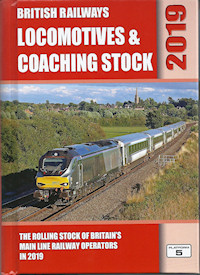
|
| Author: | Peter Fox, Peter Hall, Robert Pritchard |
| Publisher: | Platform 5 |
| Format: | Book |
| Subject: | Rolling Stock |
| Category: | Numbers - Current |
| Spec: | A6, hardback, 240-432 pages, colour photos in most editions |
| Publication date: | 1986-current |
| Summary: | Platform 5 produced quality spotting books from 1978 onwards and their take on the 'combined volume' has been pretty much the standard ABC for the past 30 years. |
| Review: | Platform 5 challenged Ian Allan's dominance of the spotting book market in 1978, publishing a pocket book of locos. This was followed up with similar titles covering multiple units and coaches. Each has been updated once or twice every year since, and from 1985 the separate titles were also made available in an annual combined volume. The format worked and has changed very little in the years since. Sector and ownership codes were added when they became relevent, and the multiple unit section (and separate book) was split into two (covering DMUs and EMUs) from 1989. Finally, track machines were added from about 2011. |
| Reviewed: | 03/10/2019 by Thomas Young (Comments made by others can appear in the notes section towards the bottom of this page) |
| Sample pages: | (Click on any image to view full-sized in a new window)
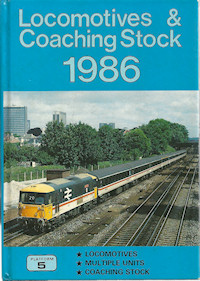
A nice, simple cover format was used from the start and has seen only minor changes.
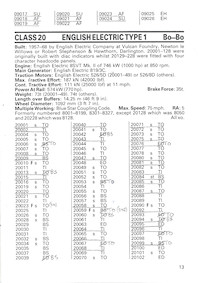
Each class was headed by technical details, followed by a listing of individual numbers including allocations and showing variations from the standard in terms of liveries and fittings.
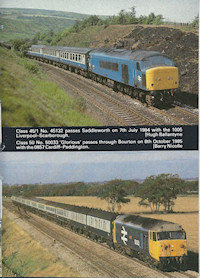
Each section included 16 pages of photographs, all in colour from the 1986 edition onwards. These covered most types.
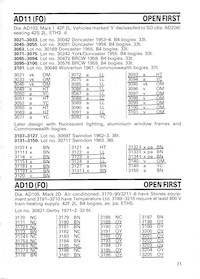
Coaches were covered in numerical order, with build details summarised and allocations and individual variations listed.
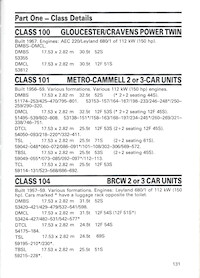
To avoid lots of repetition, technical details for first generation DMUS were provided separately, organised by class number.
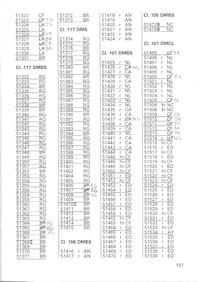
This was followed by a numerical listing, each batch being headed by its class code, and each number showing allocation and technical/livery variations.
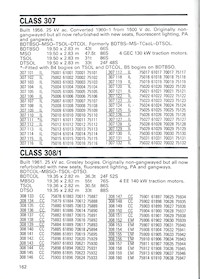
Fixed-formation units were covered in class number order, and the individual coaches were shown from the outset, though this required the use of a condensed font.
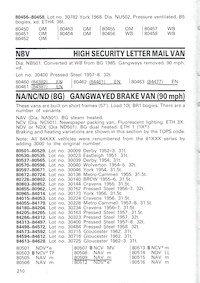
In the combined edition the non-passenger-carrying coaching stock was shifted nearer the back (after the DMUs and EMUs).

Early editions listed privately-owned coaches separately, again near the back.
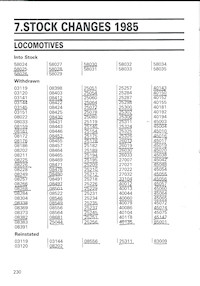
An interesting inclusion in early editions of the combined volume was a summary of stock changes (additions and withdrawals) in the preceding year.
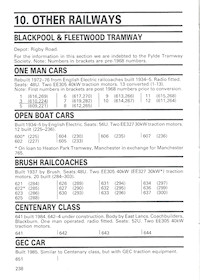
The final section of the combined volume listed the stock of other railways (though not London Underground).
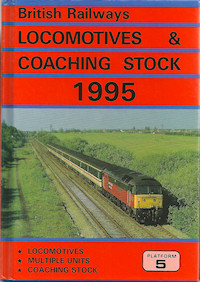
By 1995 the inclusion of additional information (such as sector codes) had seen the page count rise from 240 up to 352.
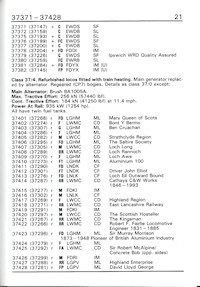
While locos had originally been covered using a three column layout, the extra information, and the proliferation of namings, meant that most pages now had just one column of numbers.
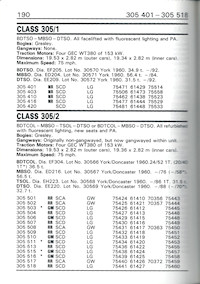
The layout of the pages covering units was also relaxed, alowing the same font to be used throughout, and providing more space for users to add updates or notes.
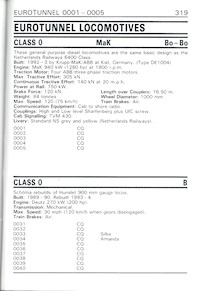
Eurostar and Eurotunnel stock (including the car/lorry-carrying wagons) was now included.
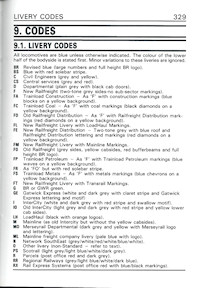
Liveries had been denoted by a single letter, but two-letter codes became neccesary as the number of different colour schemes grew. Other appendices listed allocation, pool and ownership codes.
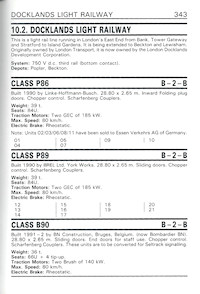
Other railways were still included, now covering the new generation of 'light-rail' networks.
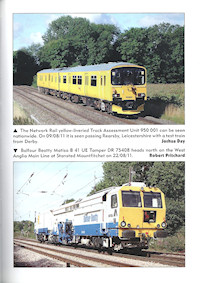
Coverage of track machines was added from about 2011, including photos grouped with those of DMUs.
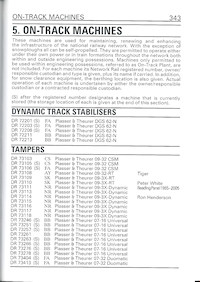
Details provided for track machines were the number, operational status, owner, type and (where relevant) the name carried.

40 years on and Platform 5 is still going strong. To cover the various new-build classes, the page count of the combined volume had now risen to 432. |
| Notes: |
No notes have been left yet. ?There may be some notes posted but which have not yet been approved.
|
| Edits: | This item has not been edited.
|

 Register
Register